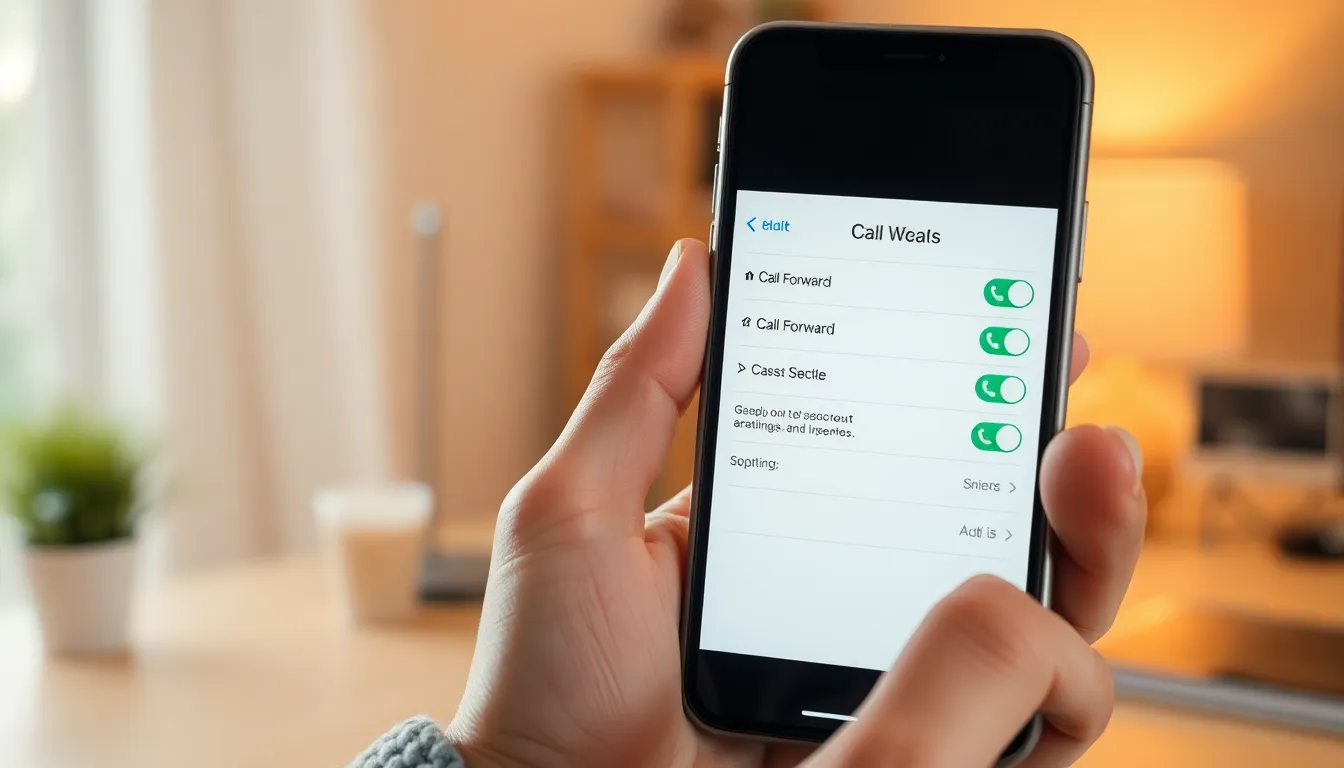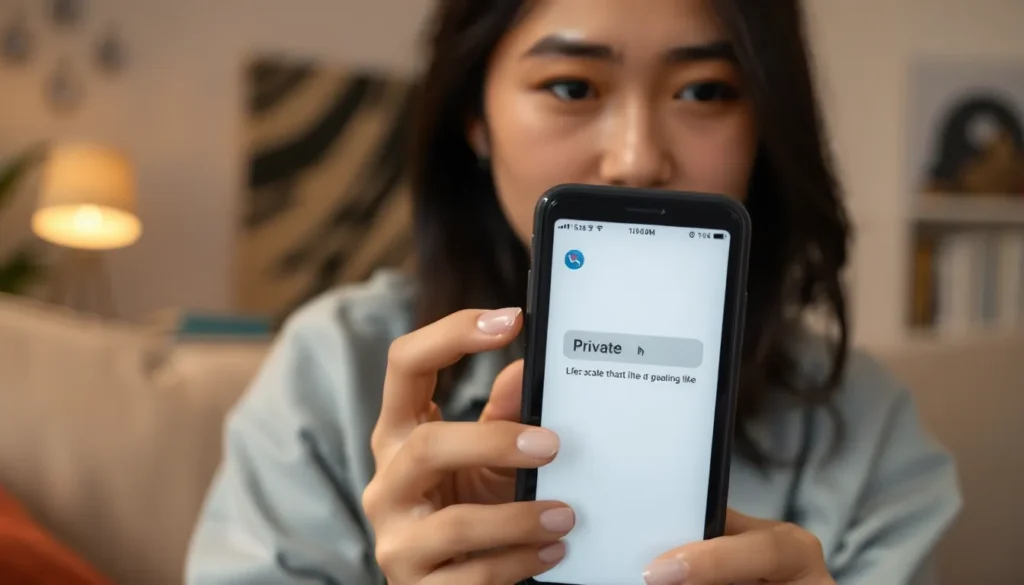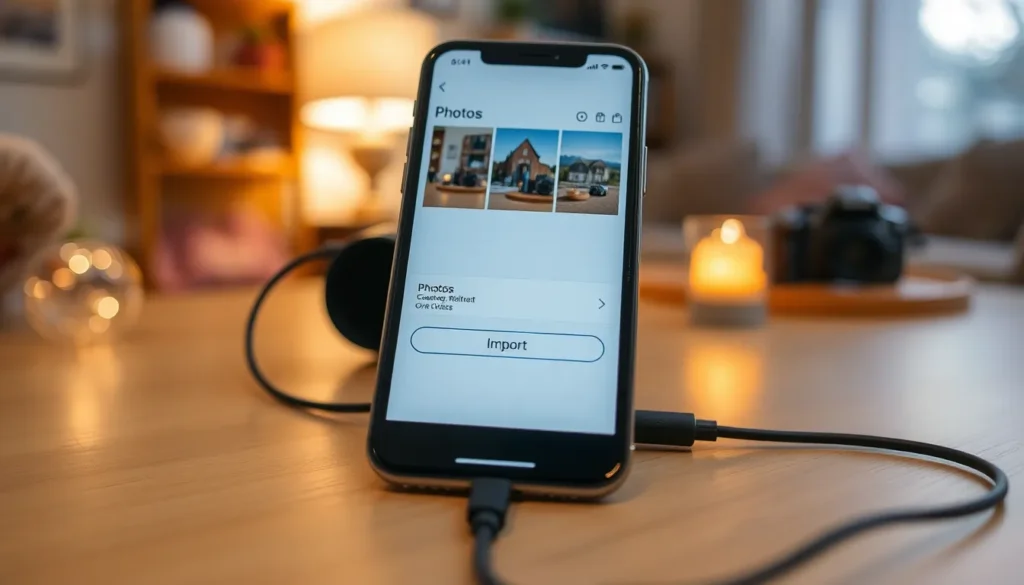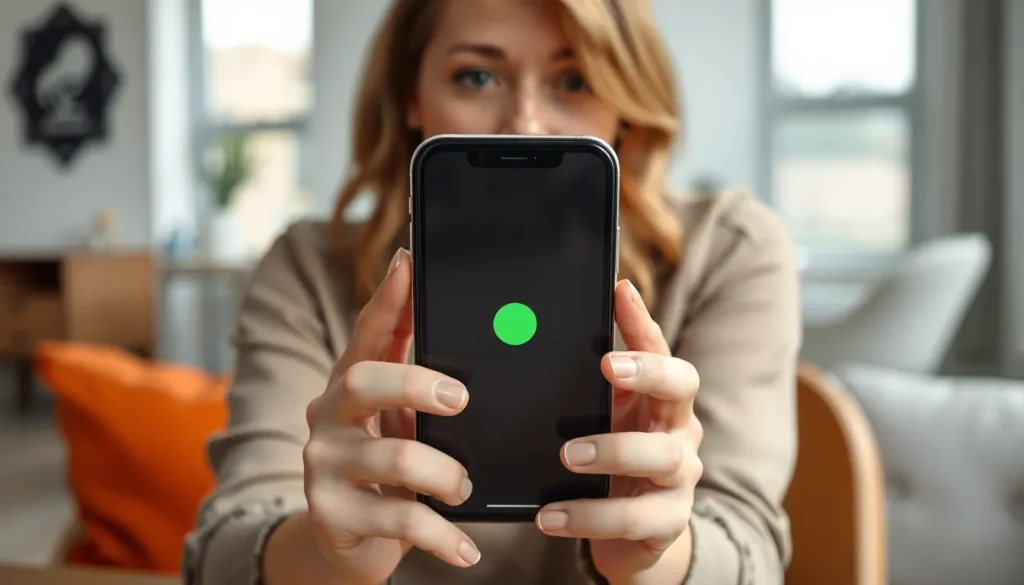Table of Contents
ToggleIn a world where multitasking reigns supreme, knowing how to forward phone calls on an iPhone can be a game-changer. Imagine this: you’re in the middle of a crucial meeting, and your phone starts ringing like a toddler in a candy store. Instead of fumbling for your phone like a deer in headlights, you can seamlessly redirect those calls to another number.
Understanding Call Forwarding on iPhone
Call forwarding on an iPhone allows users to redirect incoming calls to another phone number. This feature enhances communication flexibility, especially during busy times.
What Is Call Forwarding?
Call forwarding directs calls from one number to another. Users can set it up for all incoming calls or choose specific conditions. For instance, options include forwarding calls when busy or unanswered. Often, this feature is essential for professionals managing multiple responsibilities. Understanding how to configure it effectively makes a difference in maintaining connectivity.
Benefits of Call Forwarding
Call forwarding offers several advantages. First, it ensures important calls reach users even when they cannot answer. Second, professionals experience fewer interruptions, helping them focus on tasks. Third, it enhances customer service by directing calls to team members available to assist. Finally, this feature provides seamless communication during travel or when users switch devices.
How to Forward Phone Calls on iPhone

Forwarding phone calls on an iPhone offers a practical solution for staying connected during busy moments. It ensures that important calls reach the designated number.
Using the iPhone Settings
To use the iPhone settings for call forwarding, open the Phone app, then tap on “Settings.” Next, look for “Call Forwarding” options within the Phone menu. Toggle the Call Forwarding switch to on. Enter the desired forwarding phone number to redirect calls. Testing the setup is essential to confirm it works correctly.
Using Carrier Features
Many carriers provide additional call forwarding features. For users, contacting the carrier’s customer support may yield specific instructions. Some carriers offer code-based methods. Dialing specific codes can enable forwarding functionality directly. Check the carrier’s website for further details regarding their forwarding options.
Troubleshooting Call Forwarding Issues
Trouble with call forwarding on an iPhone can disrupt communication. Various problems may arise, but most can be resolved with simple solutions.
Common Problems and Solutions
Inconsistent call forwarding often stems from incorrect settings. Check the forwarding number to ensure accuracy. Disabled call forwarding in settings can also lead to missed calls. Activating the Call Forwarding switch should resolve this issue. Sometimes, carrier restrictions prevent forwarding, particularly international calls. Users should verify if their plan supports this feature to avoid complications. Lastly, a restart of the phone may fix temporary glitches affecting call forwarding. Restarting keeps the device running smoothly and supports proper functioning.
Contacting Your Carrier for Help
Reaching out to the carrier often provides quick assistance for call forwarding problems. Many service providers have dedicated customer support teams ready to help. They can clarify any carrier-specific settings or restrictions. Users might find it helpful to have their account details handy for faster service. Carrier websites often offer additional resources, including troubleshooting guides and popular call forwarding codes. Exploring these resources saves time and enhances understanding of the service.
Alternative Options for Call Management
Exploring alternatives for call management can enhance flexibility and ensure seamless communication.
Using Third-Party Apps
Many third-party apps provide robust call management features. Applications like Google Voice and Grasshopper offer call forwarding along with additional options like voicemail and text messaging. Users can customize settings to suit their preferences and streamline their communication processes. For instance, Google Voice allows forwarding to multiple numbers simultaneously, ensuring no important calls are missed. Grasshopper offers professional features for business users, enabling them to manage calls through a dedicated business line without needing a separate device. Users can easily find these apps in the App Store, making it straightforward to explore and implement.
Other Built-in iPhone Features
The iPhone includes several built-in features that aid call management. Users can activate “Do Not Disturb” mode to silence all calls, only allowing calls from designated contacts. Moreover, “Call Waiting” offers the ability to hold one call while answering another, ensuring critical calls don’t go unanswered. The “Silence Unknown Callers” feature helps filter out spam calls, enhancing focus and privacy. Each of these features can be customized through the Phone settings, providing users with various tools to manage their calls according to their specific needs and situations.
Mastering call forwarding on an iPhone can significantly enhance communication efficiency. By redirecting calls during busy moments users can ensure they never miss important connections. The flexibility of this feature caters to various professional and personal needs making multitasking easier.
With the simple steps outlined users can set up call forwarding quickly and troubleshoot any issues that arise. Exploring additional options like third-party apps and built-in features further empowers users to manage their calls effectively. Embracing these tools not only streamlines communication but also fosters a more productive lifestyle.









